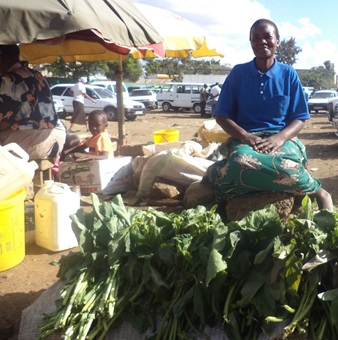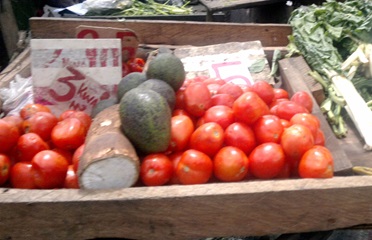This social/solidarity economy in higher education project seeks to gain a greater understanding of people-centered economic activity, so that this can inform teaching and practice at universities. We are very grateful to Mary Mutinda: mmutinda@strathmore.edu and Mercy Kano: mkano@strathmore.edu from Strathmore University, Kenya, for this article.
The Mukuru slum, made up of the Mukuru kwa Njenga and Mukuru kwa Reuben, is an informal settlement area covering approximately 450 hectares and lying approximately 6Km South East of Nairobi, the capital city of Kenya.
 The majority of the food and vegetable businesses are run by women entrepreneurs popularly referred to as “Mama Mboga” (Vegetable mom). In the traditional African culture a woman will be left to take care of the home and children. In the cases where the woman ventures out to work it will commonly be to step into the shoes of the absentee male provider (who has either died or disserted the family) or in a few occasions to substitute family income due to growing demands. The “Mama Mboga” is therefore typically a single parent with children attending school.
The majority of the food and vegetable businesses are run by women entrepreneurs popularly referred to as “Mama Mboga” (Vegetable mom). In the traditional African culture a woman will be left to take care of the home and children. In the cases where the woman ventures out to work it will commonly be to step into the shoes of the absentee male provider (who has either died or disserted the family) or in a few occasions to substitute family income due to growing demands. The “Mama Mboga” is therefore typically a single parent with children attending school.
The vegetable business operates at three levels. There is the large scale market vendor – usually stationed at Muthurwa market or Wakulima (Swahili for ‘Farmers’) Market also commonly referred to as Marikiti. The two markets are about 10 kilometers from Mukuru. Vegetables here are sold in bulk of 50 kg gunny sacks or 10 – 20kg large crates. The best bargains are between 4am and 5am local time. Vendors will pay about KES30 – KES40 (£0.22 – £0.29) for public transport to the market.
The second tier is the ‘wholesale’ Mama Mboga stationed within Mukuru. These will typically be the women who trade in margins from bulk purchases from Muthurwa and Marikiti. They are usually stationed along the main roads accessing Mukuru and operate an open air setup spreading out their goods. They will sell their goods in quantities of smaller crates or buckets.
The third tier is the ‘small scale’ Mama Mboga who will operate within the small streets in Mukuru. They will operate from small stands usually an extension to their residential homes and will package their vegetables in smaller quantities into plastic bags for ease of purchase by their customers.
Whereas the startup capital for third tier level business can be as low as KES1,000 (£7.30), scaling up the business from the third to the first tier requires significant capital outlay especially for stock. Interviews with the Mama Mboga revealed that the majority would seek such capital from informal peer-to-peer lending systems operating within Mukuru.

However, with weak social ties characteristic of urban settlements where the average length of residency is just 5 years, how do such informal lending systems form and how are they sustained over time? The finance team, a constituent team of an ongoing research into improving access to justice and basic services in informal settlements in Kenya, conducted in-depth interviews and observation of operations with four randomly selected savings group schemes in the Mukuru settlement between 10th and 14th November 2014 with the aim of deepening its understanding of members’ ability to repay loans within an urban settlement where social ties are relatively loose.
A key question that the team sought to understand is whether there exists an optimal group characteristic and what are the embedded social ties that enable proper functioning of the scheme.
The team made the following observations:
- Membership of around 12 – 15 seems to be the ideal size. From interviews with members, a number which equates to the months in a year makes it easier to manage and it does not take long before all the members receive their money in case of a merry-go-round. In fact groups with large initial membership tend to break up or lose members until an optimal size is achieved.
- Locality is the major tie on which the formation of these groups is based on with very weak family ties observed. This explains why migration of members is the major cause of lapses.
- Collection of contributions is conducted manually by an appointed accountant within the group who circulates a contributions book to individual members. In most cases this was conducted during group meetings with three of the groups indicating they applied a penalty for non-attendance.
- There was generally a high frequency of contribution collection (weekly or daily) with amounts ranging between KES20 to KES200 (£0.15 – £1.46). The frequency of the collection meant that contributions were small thereby reducing chances of default.